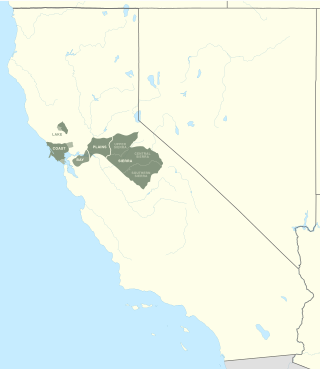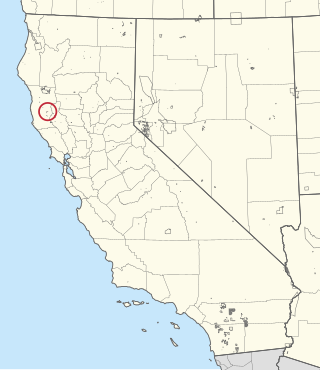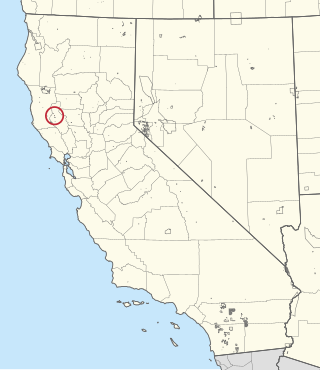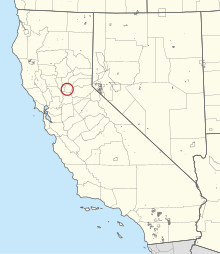History
The UAIC is the successor to the Auburn Band, largely Miwok Indians. These indigenous communities of California Indians resided near Auburn, California and survived the depredations of the 19th century.
This territory offered UAIC ancestors abundant year-round food sources. Food gathering was based on seasonal ripening, but hunting, gathering and fishing went on all year, with the greatest activity in late summer and early fall.
Seasonal harvests were only for those with personal property and much activity and social behavior centered on them. Status, sharing, trading, ceremonies and disagreements were important adjuncts to the gathering and distribution of food. Grasses, herbs, and rushes provided food and material for clothing and baskets. Seeds were gathered by the use of a seed beater and tray. They were then parched, steamed, dried, cooked into a mush or dried for storage.
Bear hunts were ceremonial. Black bears were usually hunted in winter, where lighted poles were used to drive them from their dens. Grizzlies that lived on the valley floor were greatly feared and rarely hunted.
The historic existence of the Auburn Indian Community is documented in the Bureau of Indian Affairs' correspondence dating back to the early 1900s. In 1917, the United States government purchased 20 acres (81,000 m2) of land near Auburn, California, that was put in trust for the Auburn Band and formally established a reservation, known as the Auburn Rancheria. [2]
However, with the passage of the Indian Reorganization Act (“IRA”), 25 U.S.C. § 671 et seq., in 1934, a dramatic shift in Federal Indian policy occurred, whereby Congress moved away from assimilationist Indian policies towards policies of self-governance. [3] The governmental structure allowed by the IRA placed the Bureau of Indian Affairs (BIA) in charge of elections among Indian tribes to allow each tribe to accept or reject the tribal reorganization provisions of the IRA. In 1935, the 36 adult members of the Auburn Band voted 16 to 5 to reject the IRA. [4]
The United States Congress enacted the Rancheria Termination Act in 1953, which terminated federal trust responsibilities to the Auburn Band, among many other California Indian tribes. Only a 2.8-acre (11,000 m2) parcel of land with a park and a church remained after the government sold the Auburn Rancheria land. In 1967, the United States terminated their recognition of the Auburn Band. [2]
President Richard Nixon ended termination policy in 1970. [2] In 1978, during the 100th United States Congress, both the United States Senate and House of Representatives created a new federal Indian policy based on Native American self-determination. [2]
On July 20, 1991, descendants of the historic Auburn Band reorganized their tribal government and adopted the Constitution of the United Auburn Indian Community (UAIC), which they presented to the BIA on August 30, 1991 with a request that the Bureau “formally recognize the United Auburn Indian Community of the Auburn Rancheria.” An Act of Congress passed the Auburn Indian Restoration Act, which restored the Tribe's federal recognition in 1994. [2] A provision in the act permits the tribe to purchase lands in Placer County to create a new reservation. [2]
In September 2002, the U.S. Department of the Interior took into trust the 49-acre (200,000 m2) parcel of property that the Thunder Valley Casino is built on today. [5]
Programs
The UAIC Community Giving Program, a philanthropic branch of tribal government established by the Tribe in March 2004, has provided over $4.6 million USD to nonprofit organizations supporting needs in education, health, arts and humanities, environment, community development and social services. [6]
UAIC has also established its own Education Department as a means to provide tribal members with educational programs, activities and services and maintains an Environmental Protection Office to address tribal environmental issues. [6] UAIC established its own tribal school in 2008. [7]
Thunder Valley Casino Resort
The Tribe owns the Thunder Valley Casino Resort in Lincoln, California, located near the northwest corner of Athens and Industrial Avenues, in the Sunset Industrial Area of unincorporated Placer County. The 200,000-square-foot (19,000 m2) facility, which opened in June 2003, offers a variety of entertainment including slot machines, video gaming, and various table games. Guests can also dine in an array of restaurants and bars.
UAIC entered into a Tribal-State Gaming Compact with the State of California in September 1999 in order to conduct Class III gaming on trust land. This Compact was later successfully renegotiated with Governor Arnold Schwarzenegger in 2004.
In an unprecedented approach, the UAIC worked closely with Placer County, neighboring cities, and citizens that resulted in a Memorandum of Understanding to mitigate any potential impacts of the proposed development. [6]
In 2010, Thunder Valley Casino Resort was named Best Regional Casino in Sacramento Magazine's "Best Of" issue, beating out competitor casinos Red Hawk Casino and Jackson Rancheria Casino and Hotel. [8]

The Miwok are members of four linguistically related Native American groups indigenous to what is now Northern California, who traditionally spoke one of the Miwok languages in the Utian family. The word Miwok means people in the Miwok languages.
The California Valley Miwok Tribe is a federally recognized tribe of Miwok people in San Joaquin County and Calaveras County, California. They were previously known as the Sheep Ranch Rancheria or the Sheep Ranch Rancheria of Me-Wuk Indian of California. The California Valley Miwok are Sierra Miwok, an indigenous people of California.
The Ione Band of Miwok Indians is a federally recognized tribe of Miwok people in Amador County, California. As of the 2010 census the population was only 5.
The Shingle Springs Band of Miwok Indians, Shingle Springs Rancheria, California is a federally recognized tribe.
The Tuolumne Band of Me-Wuk Indians is a federally recognized tribe of Miwok people in Tuolumne County, California. The Tuolumne Band are central Sierra Miwok people. Annually, in September, the tribe holds an acorn festival and intertribal gathering.
The Federated Indians of Graton Rancheria, formerly known as the Federated Coast Miwok, is a federally recognized American Indian tribe of Coast Miwok and Southern Pomo Indians. The tribe was officially restored to federal recognition in 2000 by the U.S. government pursuant to the Graton Rancheria Restoration Act.

The Round Valley Indian Reservation is a federally recognized Indian reservation lying primarily in northern Mendocino County, California, United States. A small part of it extends northward into southern Trinity County. The total land area, including off-reservation trust land, is 93.939 km2. More than two-thirds of this area is off-reservation trust land, including about 405 acres (1.64 km2) in the community of Covelo. The total resident population as of the 2000 census was 300 persons, of whom 99 lived in Covelo.
The 70-acre (280,000 m2) Coyote Valley Reservation in Redwood Valley, California is home to about 170 members of the Coyote Valley tribe of the Native American Pomo people, who descend from the Shodakai Pomo. They are a federally recognized tribe, who were formerly known as the Coyote Valley Band of Pomo Indians of California.
The Buena Vista Rancheria of Me-Wuk Indians of California is a federally recognized tribe of Miwok in Amador County, California. The Buena Vista Miwok are Sierra Miwok, an indigenous people of California.

The Redwood Valley Rancheria is a federally recognized Indian tribe located in Redwood Valley, Mendocino County, California. The tribe is primarily composed of Pomo Indians. Redwood Valley Rancheria is a sovereign Indian tribe with the powers of self-governance.

The Big Valley Band of Pomo Indians of the Big Valley Rancheria is a federally recognized tribe of Pomo and Pit River Indians, with a reservation located in Lake County, California, near the town of Finley. They conduct tribal business from Lakeport, California.
The Manchester Band of Pomo Indians of the Manchester Rancheria, formerly named the Manchester Band of Pomo Indians of the Manchester-Point Arena Rancheria, is a federally recognized tribe of Pomo Indians in California. The tribe is a community of Pomo Native Americans who are native to Northern California. The Bokeya society are enrolled in the Manchester Band of Pomo with the approval of their constitution and by-laws in 1936.

The Habematolel Pomo of Upper Lake is a federally recognized tribe of Pomo Indians in Lake County, California. The tribe's reservation, the Upper Lake Rancheria, is 119 acres (0.48 km2) large and located near the town of Upper Lake in northwestern California.

Wilton Rancheria is a federally recognized Native American tribe of Miwok people based in northern California. They were formed from Wilton Rancheria Miwok and the Me-Wuk Indian Community of the Wilton Rancheria. It regained recognition in 2009.

The Dry Creek Rancheria Band of Pomo Indians is a federally recognized tribe of Pomo people, an indigenous people of California. It has a reservation near Geyserville, California, in Sonoma County, where it operates the River Rock Casino Resort.
The Susanville Indian Rancheria is a federally recognized ranchería of Native Americans in northeastern California whose people are from the Washoe, Achomawi, Mountain Maidu, Northern Paiute, and Atsugewi tribes.

Thunder Valley Casino Resort is a hotel and casino located in unincorporated Placer County in Whitney, California near the city of Lincoln, California, 30 miles (48 km) northeast of Sacramento. It is owned and operated by the United Auburn Indian Community and designed by architect Edward Vance of JMA Architecture Studios, located in Las Vegas, Nevada. The resort opened on June 9, 2003. It was operated by Station Casinos from 2003 to 2010.
The California Rancheria Termination Acts refer to three acts of Congress and an amendment passed in the 1950s and 1960s as part of the US Indian termination policy. The three Acts, passed in 1956, 1957, and 1958 targeted 41 Rancherias for termination. An additional seven were added via an amendment in 1964. Including three previous terminations, 46 of the 51 targeted Rancherias were successfully terminated. Through litigation and legislation, over 30 Rancherias have been restored and at least five are still working to be.









